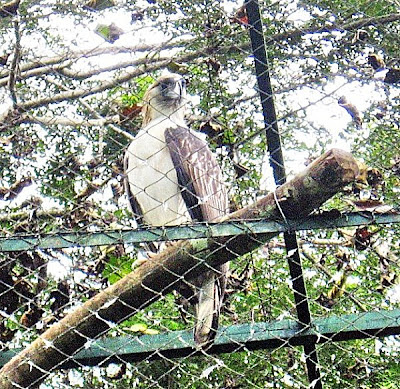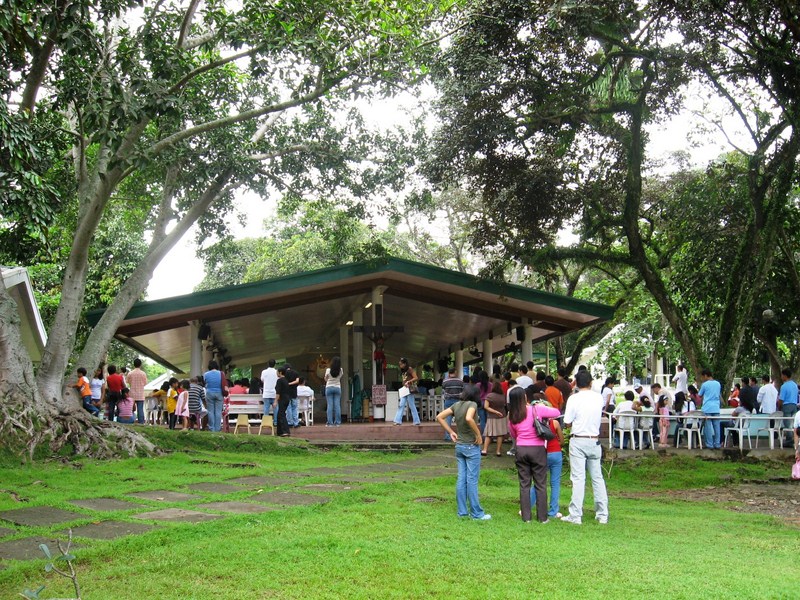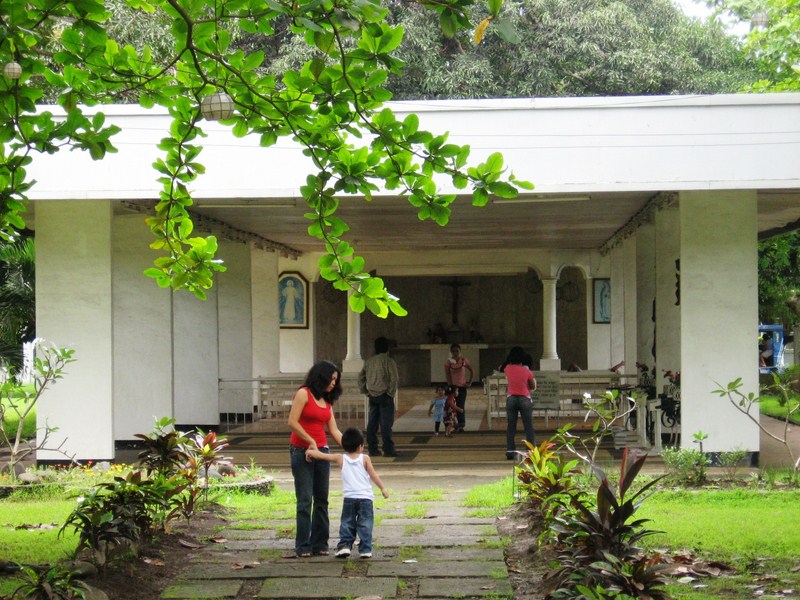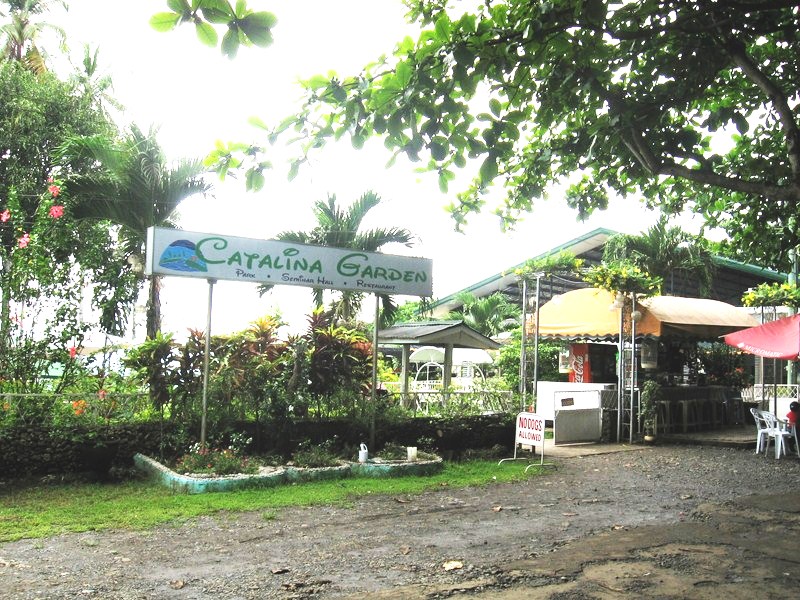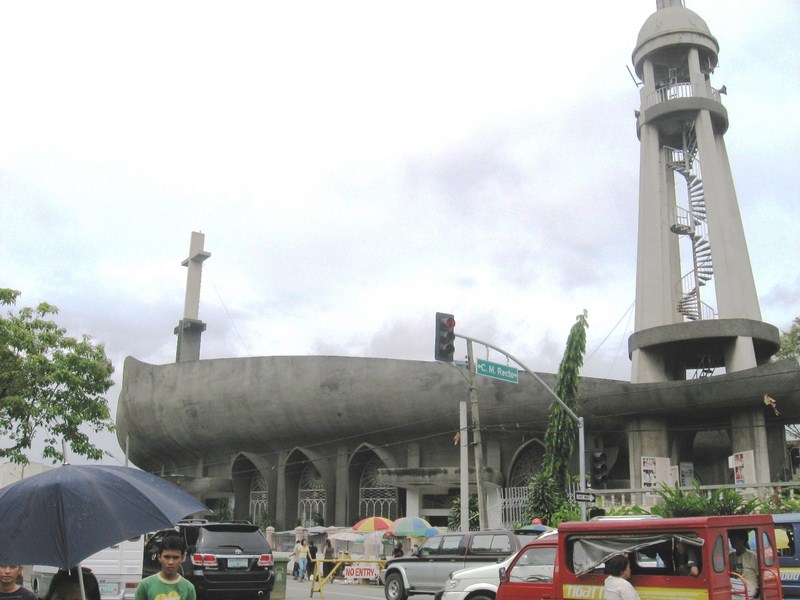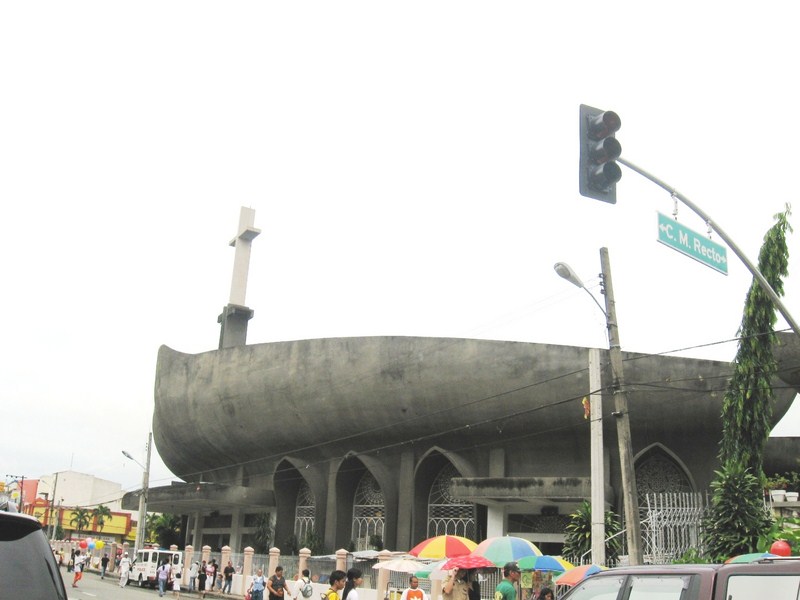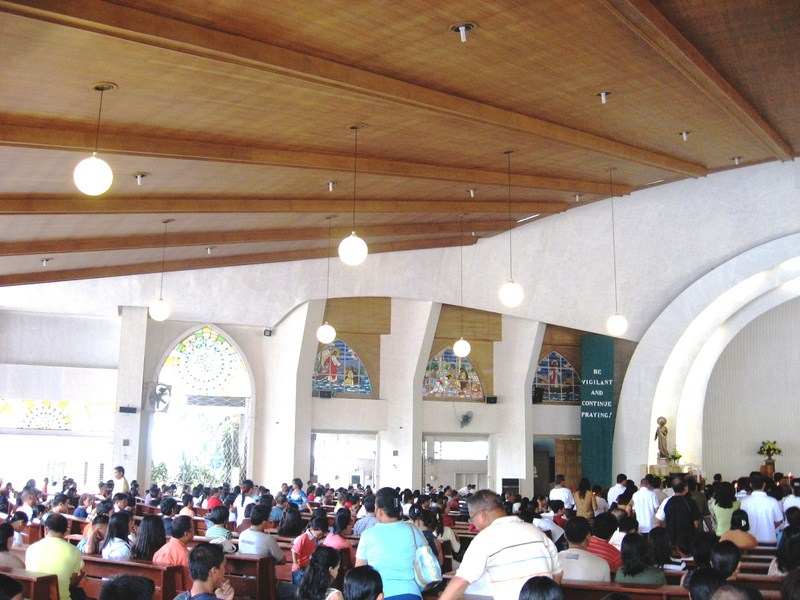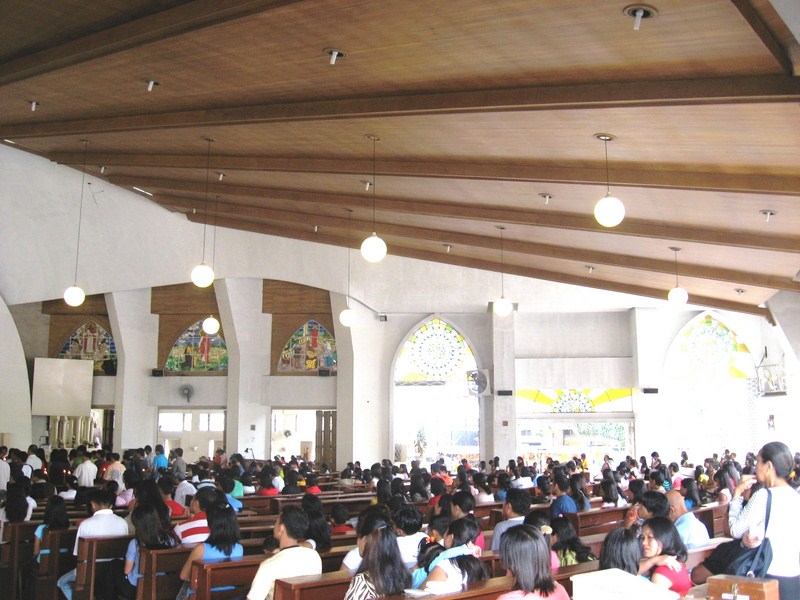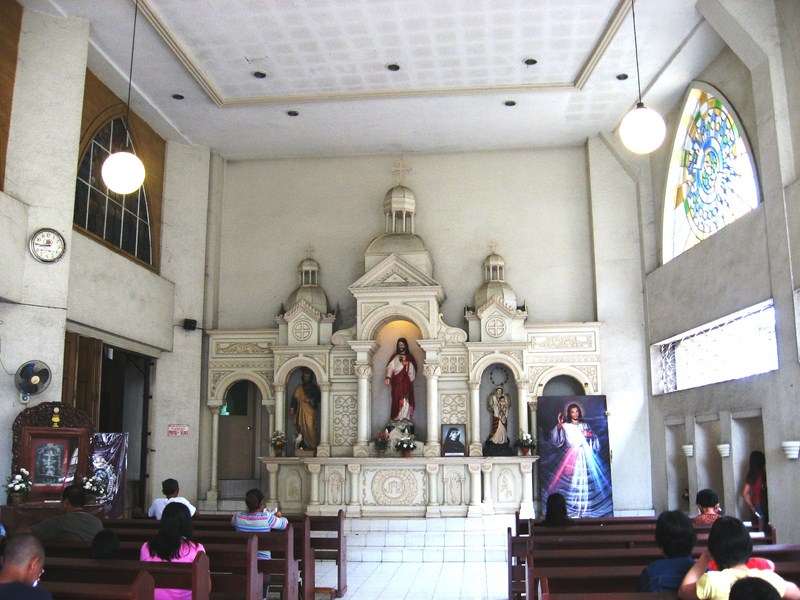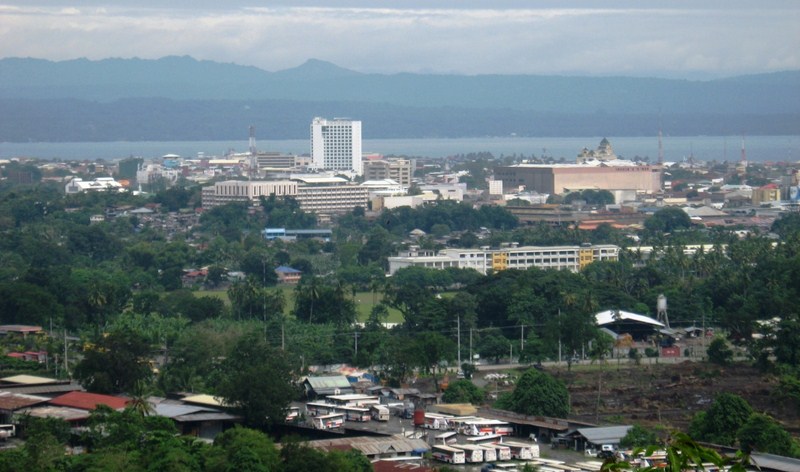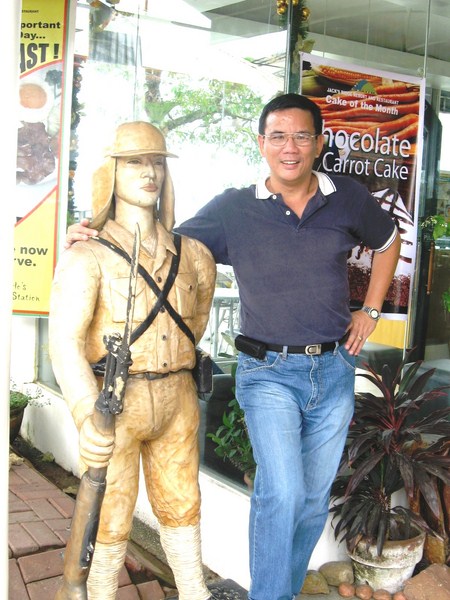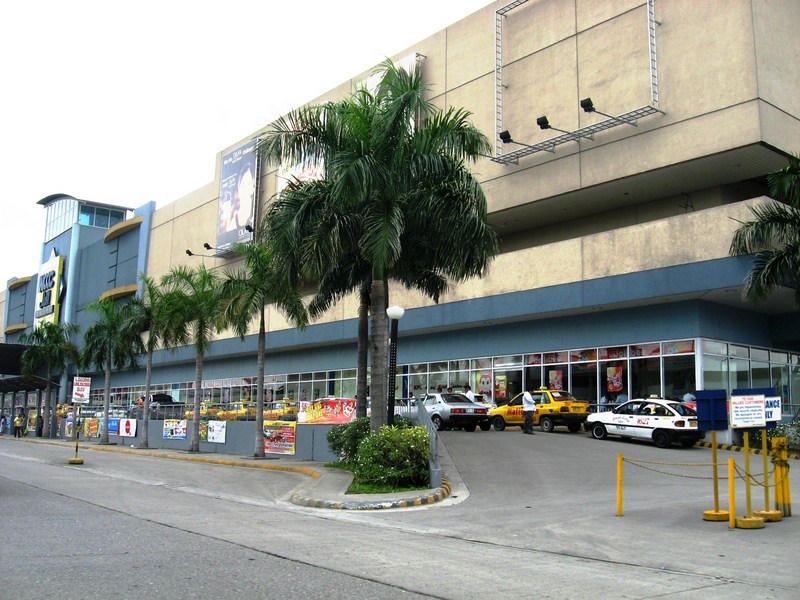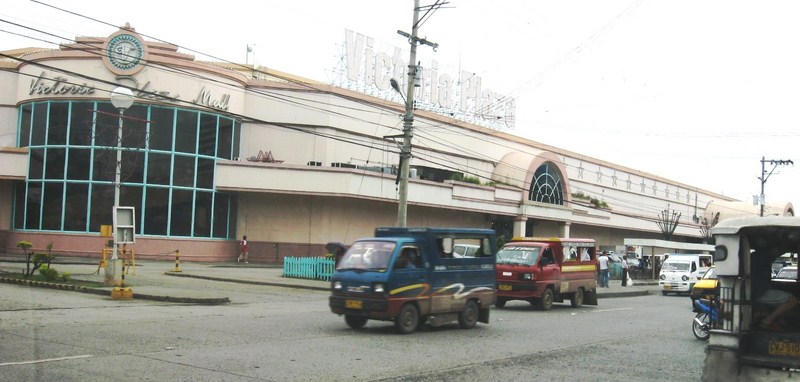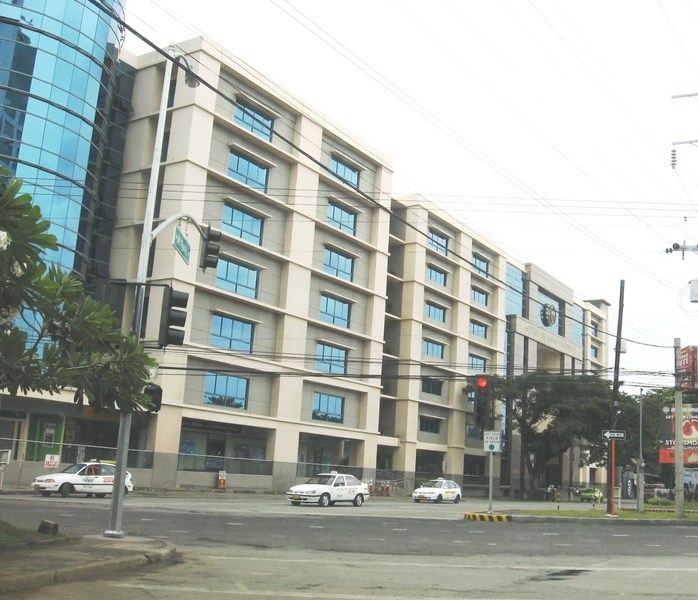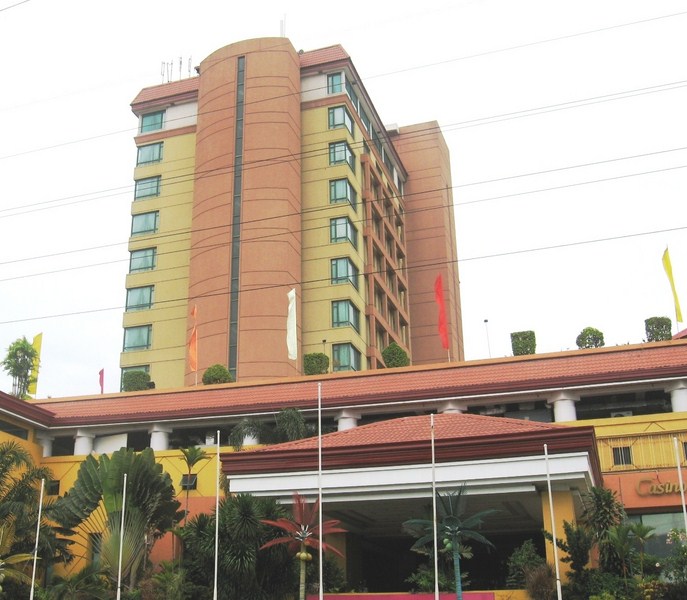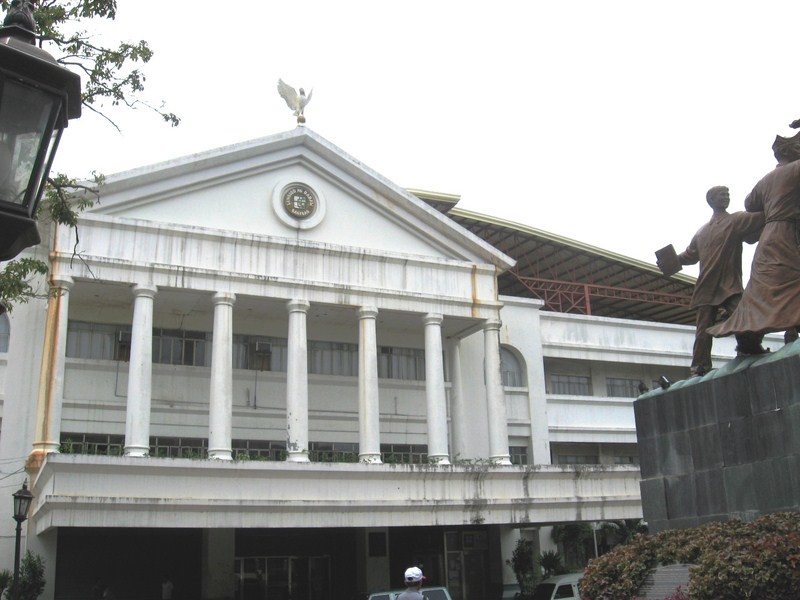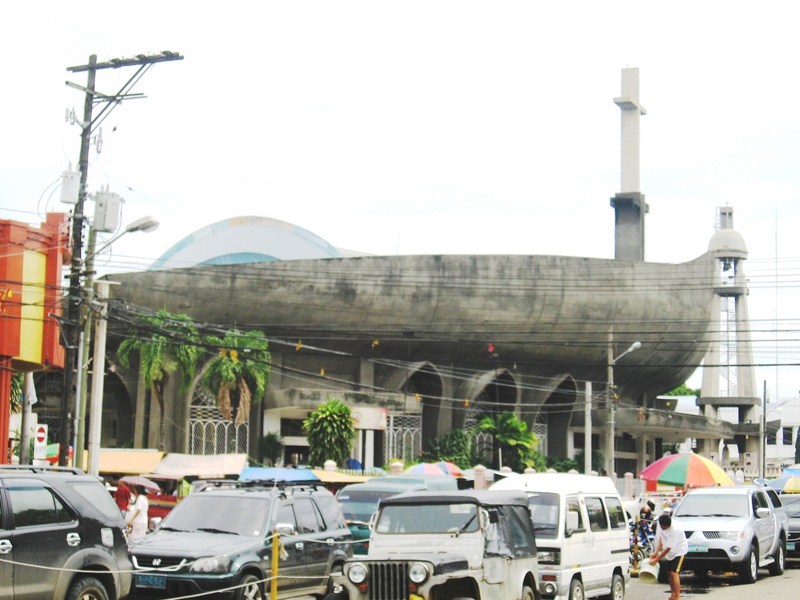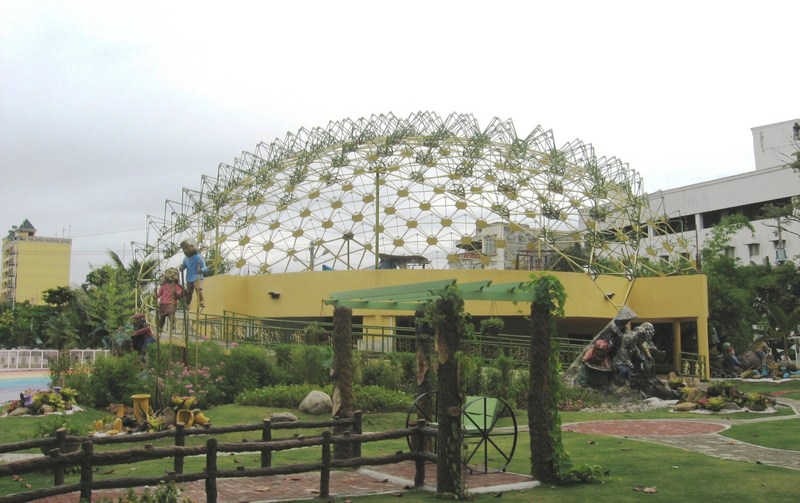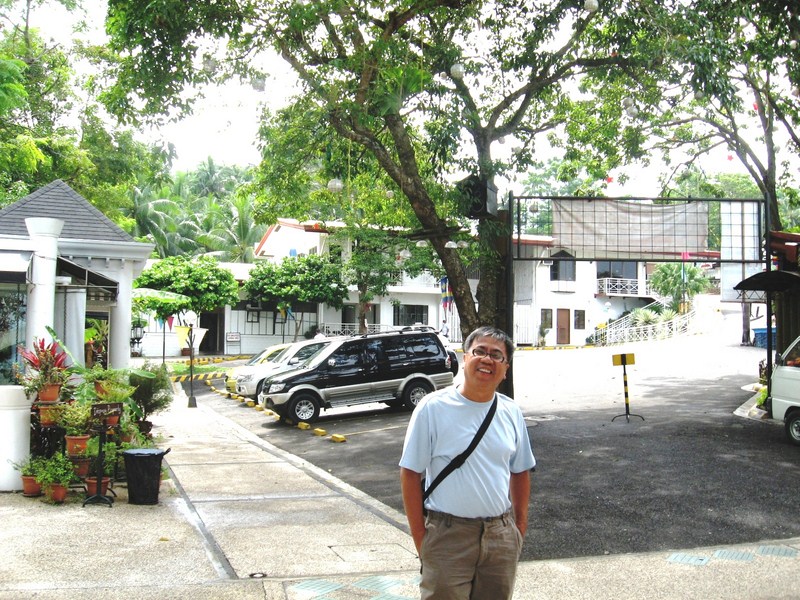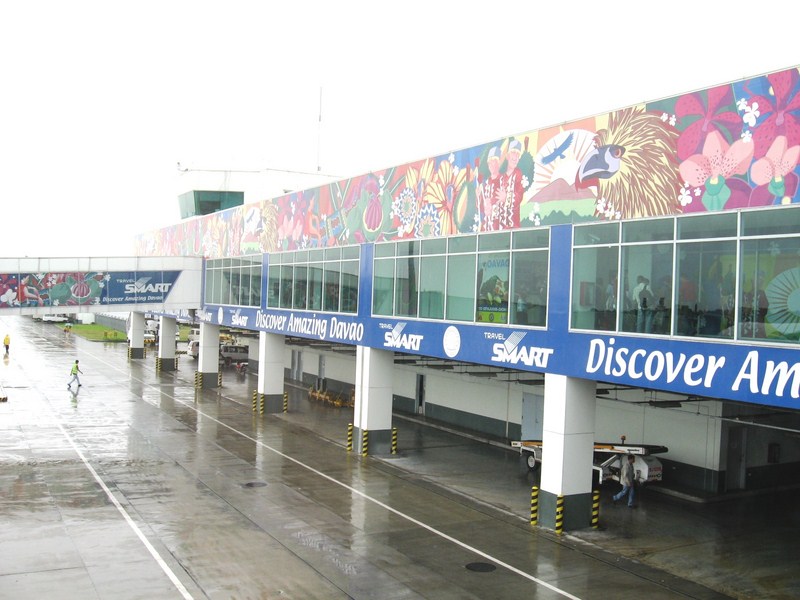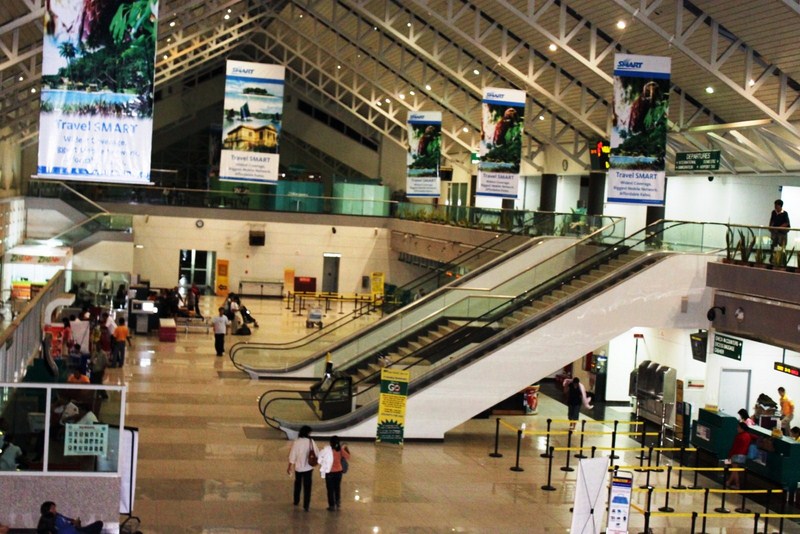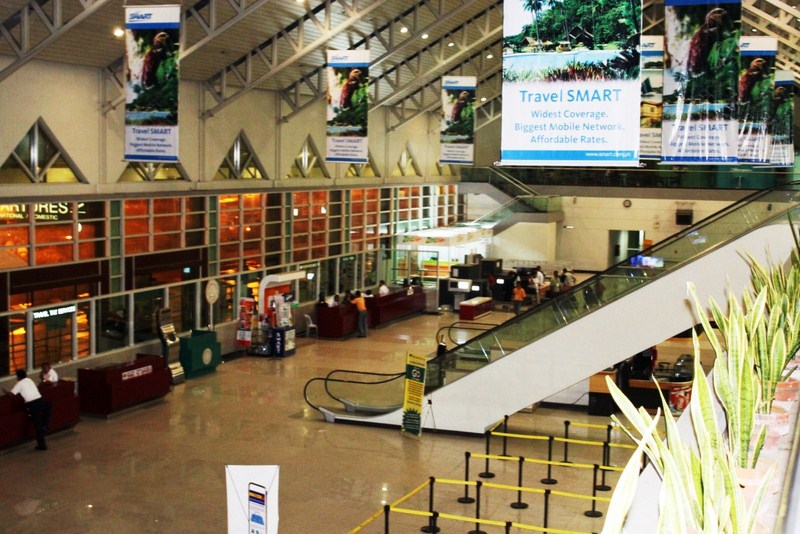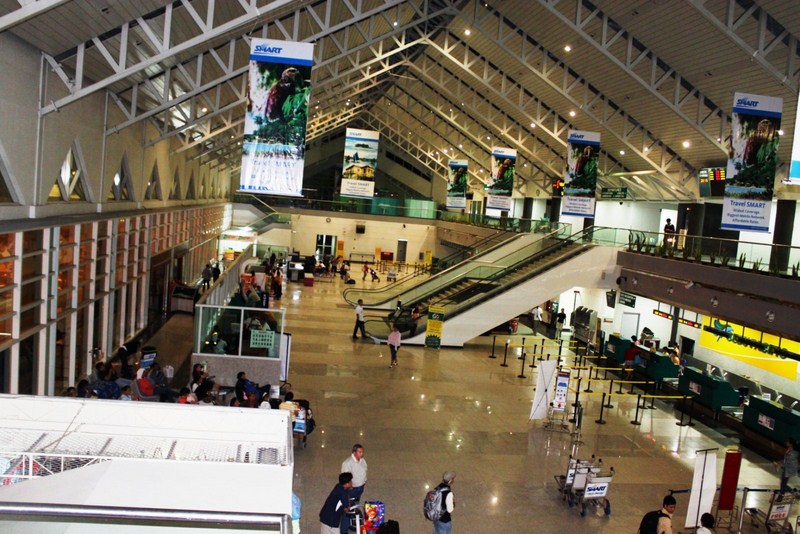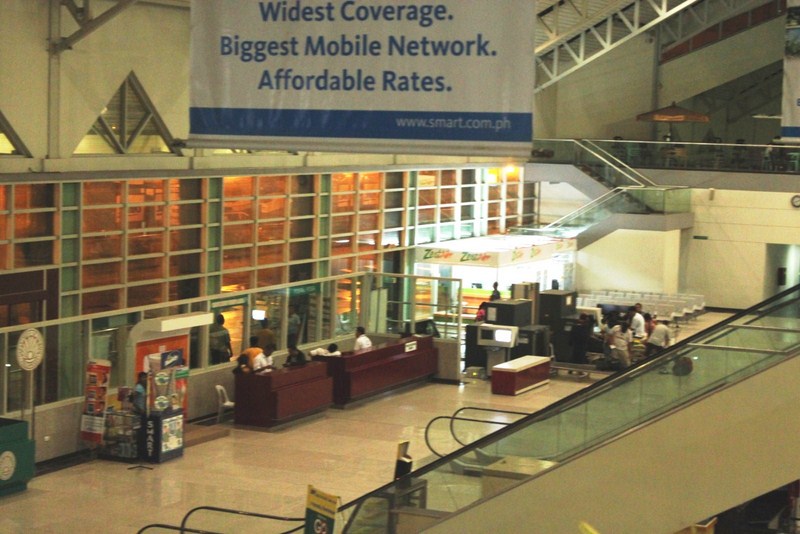After checking out at Pearl Farm Resort, we shuttled back to Pearl Farm Marina at Davao City where we had lunch at Marina Cafe. After lunch, we had our scheduled Davao City tour, having hired a driver and van the previous day. Grace and my in-laws opted to visit an orchid farm while the kids and I visited the Philippine Eagle Sanctuary and Wildlife Preserve.
Check out “Pearl Farm Resort“ and “Philippine Eagle Sanctuary and Wildlife Preserve”
Once done, our driver drove us, up a winding cemented uphill road, to Jack’s Ridge Resort & Restaurant for dinner. This would be my second visit (the first was in 2007 with fellow architect Jose “Jay” Mendoza) and the first for the rest.
 |
| Daytime ridge view of Davao City CBD |
When the Americans landed in Davao on May 1, 1945, the retreating Japanese were forced to beat a path to Matina Hills where they set up their headquarters. Here, they had a commanding view of the Davao Gulf where the American ships were anchored.Thus, it was the scene of fierce fighting between the two forces.
Caves dug by the Japanese still pockmark the area and, once in a while, people still find bullet casings and other war materials in the rocky soil. There is even the ruin of a Japanese plane that crashed on a mountainside beside the ridge.
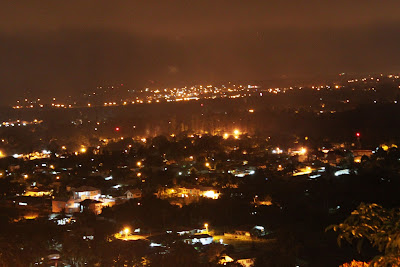 |
| Davao City by night |
Today, over half a century later, this area, now called Jack’s Ridge, is now popular with foreign and local tourists, not only for its commanding view of Central Business District (CBD) of Davao City and Davao Gulf, but also because of its popular and classy restaurants, cafes and bars now located there that offer different delicacies, truly a completely different dining experience.
 |
| Jack’s Ridge Resort |
One of the most popular restaurants here is Taklobo Restaurant where we dined. The restaurant is noted for its wide array of delectable and mouthwatering Dabawenyo dishes such as calamares, sinigang, kinilaw, grilled tuna, pork or chicken. A group of musicians also serenaded us while we were eating amidst the cool evening breeze. We also posed beside a life-size statue of a Japanese soldier.
 |
| Prehistoric taklobos outside the restaurant |
Just outside the restaurant are some prehistoric giant clam shells (taklobo) found at the ridge, an indication that this area, once submerged under the sea, was tossed to these heights by strong geological forces millions of years ago. On one side was a covered concrete stairway leading to a spacious and elegant open amphitheater where one can lounge al fresco.
 |
| Stairway leading to open amphitheater |
Jack’s Ridge Resort & Restaurant: BCG Drive, Shrine Hills, Matina, Davao City. Davao del Sur. Tel: (082) 297-8830 to 31. Fax: (082) 297-6535. E-mail: info@jacksridgedavao.com and jacksridgedavao@yahoo.com.ph. Website: www.jacksridge.com.

.jpg)
.jpg)





